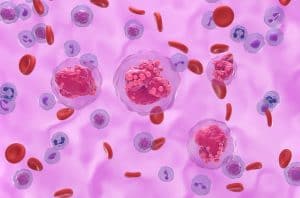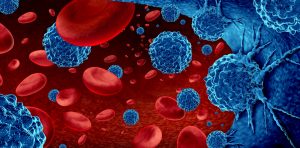
The cause of the most common form of childhood cancer found
pharmafile | May 22, 2018 | News story | Manufacturing and Production, Research and Development | biotech, drugs, leukaemia, pharma, pharmaceutical
Professor Mel Greaves, of The Institute of Cancer Research, has spent 30 years uncovering what is behind the mysterious rise in rates of acute lymphoblastic leukaemia (ALL) in children.
The number of children developing this type of cancer has been creeping up by 1% every year in higher-income countries but no research had yet been able to ascertain exactly why.
Now, a Professor Greaves has suggested that it is likely due to children growing up in cleaner environments that result in a lack of exposure to bacteria and infection.
He postulates that there is a three-step process to the development of this type of cancer, which begins with a mutation in the womb and is thought to be actually quite common – potentially being seen in as many as one in 100 babies.
The next step is a lack of exposure to germs, whether that is innocuous bacteria or viruses that cause an infection – this stage is thought to prime the immune system.
Most children will not experience either the mutation or a lack of exposure to germs but for the one in 2000 children that develop ALL, this may not be the case.
The development of cancer is then thought to be commonly triggered by a serious infection, which Professor Greaves research found to be directly related to the outbreak of flu when he observed spikes of incidence after seasonal and swine flu cases increased.
Professor Greaves said: “I hope this research will have a real impact on the lives of children. The most important implication is that most cases of childhood leukaemia are likely to be preventable. It might be done in the same way that is currently under consideration for autoimmune disease or allergies – perhaps with simple and safe interventions to expose infants to a variety of common and harmless ‘bugs’.”
Beyond just ALL, Professor Greaves also believes that there may be other conditions and cancers that also may result from a ‘germ-free’ early environment for children.
In particular, he drew attention to research needed to confirm whether type 1 diabetes, other types of leukaemia, such as Hodgkin’s lymphoma, multiple sclerosis and allergies could be attributed to lack of exposure to germs early in life.
One way in which the research suggested a way to negate the lack of germ exposure is to ensure that babies socialise with older children or be taken to a playgroup.
Ben Hargreaves
Related Content

Qlucore and Sahlgrenska Hospital sign agreement for ALL diagnosis software
Qlucore has announced that it has entered into an agreement with Sahlgrenska Hospital, in Gothenberg, …

Eli Lilly’s Jaypirca approved in US for leukaemia and lymphoma treatment
Eli Lilly has announced that the US Food and Drug Administration (FDA) has approved Jaypirca …

FDA approves IMIDEX’s AI-powered device VisiRad XR
The technological pharmaceutical company IMIDEX has been granted clearance from the US Food and Drug …








